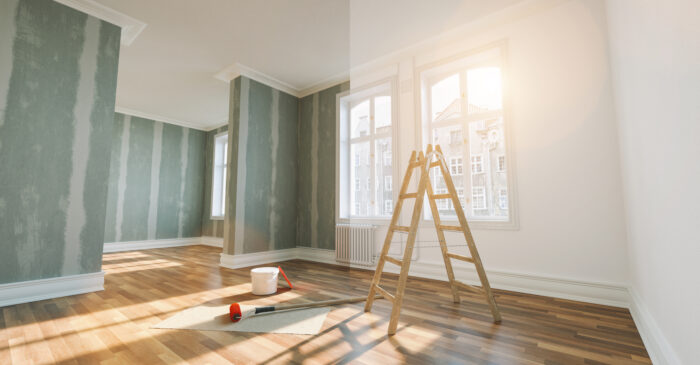Property Refurbishment Grants: A Guide for New Property Owners
For new property owners looking to breathe new life into older or neglected properties, several refurbishment grants are available to help offset the costs.
These grants can make a significant difference in transforming a vacant or derelict property into a livable home or a rental investment. Below, we explore the key grants available and the criteria for qualification.
Types of Property Refurbishment Grants
There are two primary refurbishment grants available to new property owners:
- Vacant Property Refurbishment Grant
- Derelict Property Top-up Grant
Each of these grants has specific requirements and offers substantial financial support to property owners committed to revitalising their properties.

Vacant Property Refurbishment Grant
Introduced in July 2022, the Vacant Property Refurbishment Grant provides financial assistance of up to €50,000 for eligible properties. An additional €20,000 is available if the property is classified as derelict. This grant is designed to encourage the refurbishment of long-vacant properties and bring them back into use, either as a private residence or as rental housing.
Eligibility Criteria:
To qualify for the standard Vacant Property Refurbishment Grant, the following criteria must be met:
- Vacancy Duration: The property must have been vacant for at least two years. Note that properties left purposely vacant to qualify for the grant are not eligible.
- Construction Date: The property must have been built before 2008.
- Occupancy Requirement: The property must be used as your principal private residence or be made available for rent once refurbishment work is complete.
- Tax Compliance: You must have a tax clearance certificate from the Revenue and ensure that local property taxes are paid.
- Ownership: Registered companies or developers are not eligible for this grant.
Understanding the Clawback Provisions
It’s important to be aware of the clawback provisions associated with the Vacant Property Refurbishment Grant. If the property is sold within 10 years of receiving the grant, a portion of the grant must be repaid to the local authority. The repayment amounts are as follows:
- Less than 5 years: The full amount of the grant is clawed back.
- Over 5 years but less than 10: 75% of the grant is clawed back.
- More than 10 years: No clawback is required.
These provisions ensure that the grant supports long-term property improvements rather than short-term investment gains.
Derelict Property Top-up Grant
For properties in a more severe state of disrepair, the Derelict Property Top-up Grant provides additional financial support. This grant offers an extra €20,000 on top of the Vacant Property Refurbishment Grant, bringing the total potential funding to €70,000 for qualifying properties. This additional support is intended to help cover the more extensive refurbishment needs that derelict properties typically require.
Eligibility Criteria:
In addition to meeting the requirements of the Vacant Property Refurbishment Grant, the following conditions must be satisfied to qualify for the Derelict Property Top-up Grant:
- Professional Assessment: You must submit an independent report prepared by a qualified surveyor or architect. This report must confirm that the property is structurally unsound and poses a danger.
This assessment is crucial for ensuring that the top-up grant is used for properties that genuinely need significant structural repairs to be made safe and habitable.
Maximising the Benefits of Refurbishment Grants
These refurbishment grants provide substantial financial incentives to new property owners, helping to offset the often considerable costs of bringing vacant or derelict properties back to life. To maximise the benefits of these grants, consider the following tips:
- Plan Thoroughly: Before applying, ensure that you have a clear plan for the refurbishment, including a detailed budget that accounts for the grant amounts.
- Work with Professionals: Engaging qualified professionals, such as surveyors, architects, and contractors, can ensure that your refurbishment project meets all necessary standards and qualifies for the full grant amounts.
- Consider Long-term Ownership: Given the clawback provisions, it’s wise to plan for long-term ownership of the property. Selling the property too soon could result in significant repayment obligations.
Final Thoughts
The Vacant Property Refurbishment Grant and the Derelict Property Top-up Grant represent valuable opportunities for new property owners in Ireland. These grants not only provide financial assistance but also encourage the revitalisation of long-neglected properties, contributing to the improvement of housing stock across the country. By understanding the eligibility criteria and planning carefully, you can make the most of these grants and transform a vacant or derelict property into a vibrant, functional home or rental investment.
If you are considering selling or renting out your property, talk to us today.
